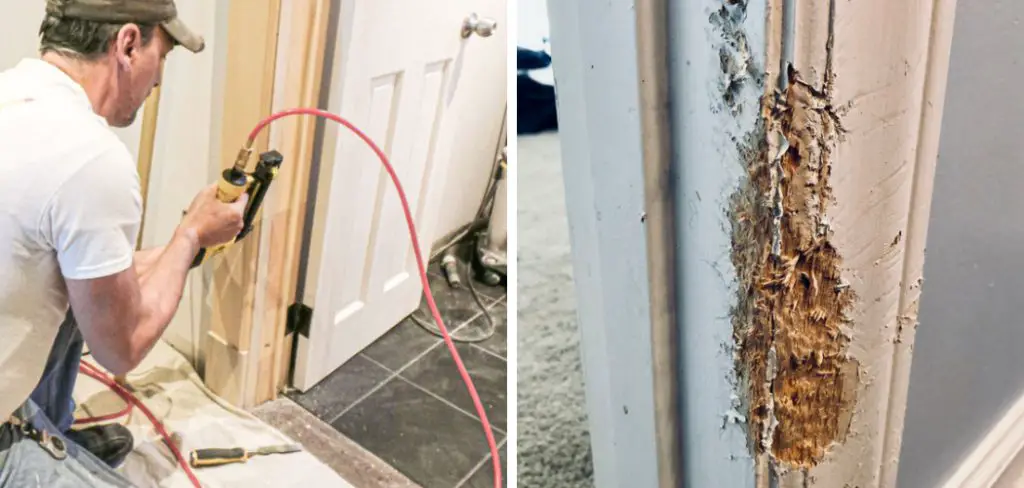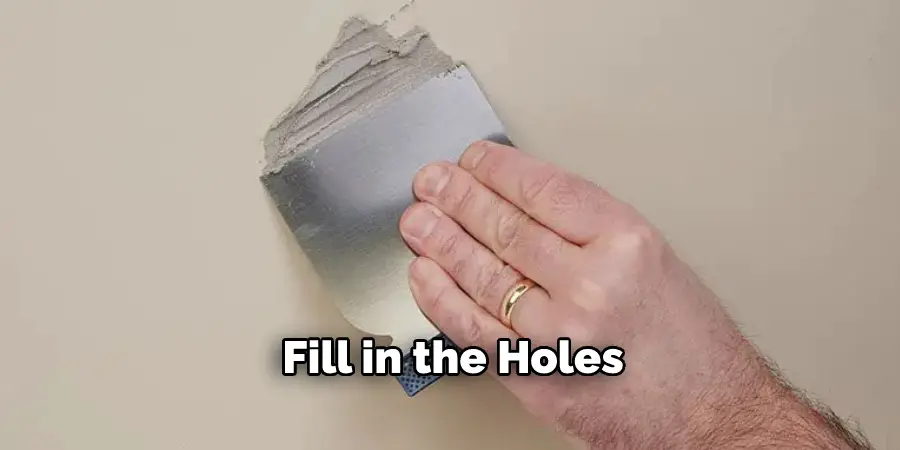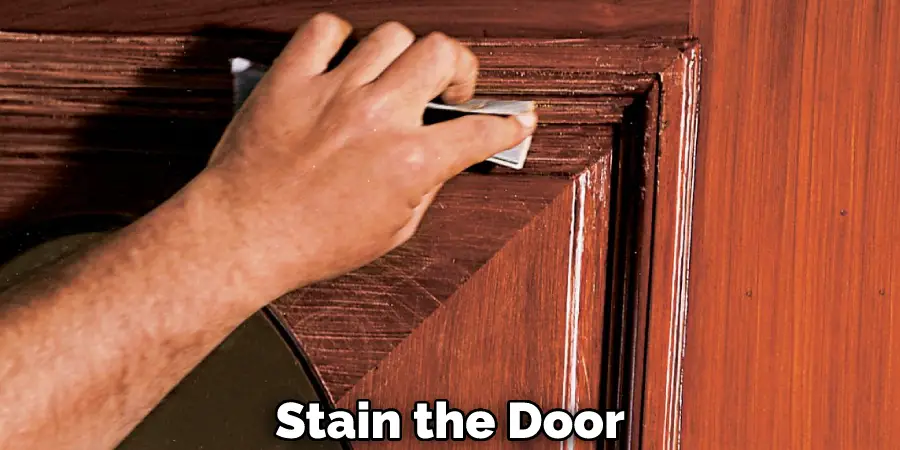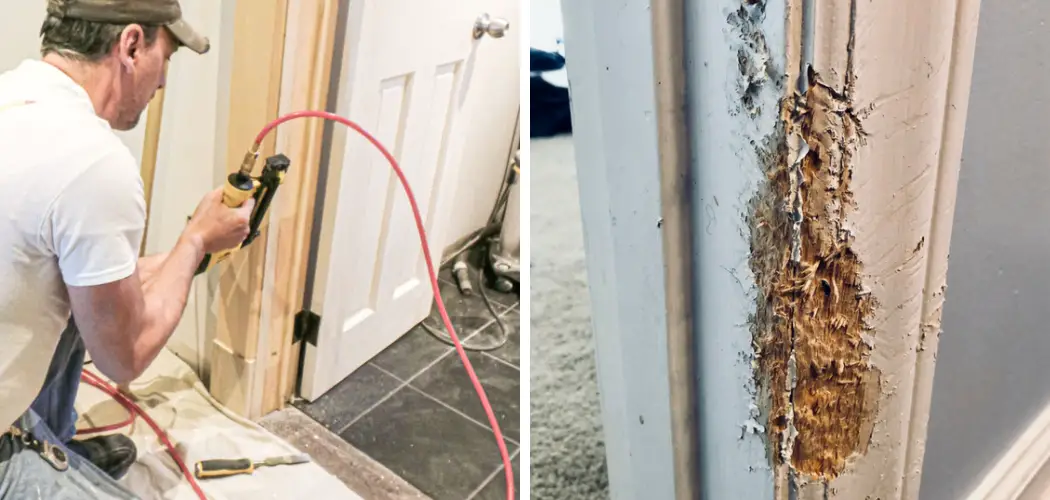Dogs are known for being loyal and loving companions. They always seem happy, wagging their tails and licking your face. However, even the best dogs can occasionally have moments where they behave badly. One common problem pet owners face when their dog starts chewing on furniture or other objects in the home. This blog post will show you how to repair wood door frame dog chewed and prevent your dog from doing it again in the future. Keep reading to learn more.

Summary: If your dog has chewed through the wood frame of your door, there are a few things you can do to repair it. First, remove any remaining pieces of wood with a hammer or a screwdriver. Then, use a saw to cut out the damaged area and replace the wood with a new piece. Finally, sand the new piece and paint it to match the original.
What Causes Dogs to Chew on Wood?
There are a few reasons your dog might start chewing on wood. One possibility is that they’re experiencing separation anxiety. When you leave the house, your dog may become anxious and start chewing on wood as a way to cope with their feelings. Another possibility is that your dog is bored and is looking for something to do. Chewing on wood can be a way for them to pass the time and relieve boredom. Lastly, some dogs may chew on wood out of curiosity or because they like the taste or smell.
Step by Step How to Repair Wood Door Frame Dog Chewed
1. Inspect the Door
You’ll first need to look closely at the door and assess the damage. If there are only a few small teeth marks, you may be able to repair the door yourself. However, if the damage is more extensive, you’ll need to replace the door entirely. Next, inspect the door frame to see if there is any damage.
2. Remove Any Splinters
Once you’ve inspected the door, you’ll need to remove any splinters. This can be done with a pair of tweezers or a small knife. First, sterilize the tweezers or knives with rubbing alcohol. Then, carefully remove the splinters from the door. If the splinters are too deep, you may need to sand them down. Be careful not to cut yourself while you’re removing the splinters.
3. Fill in the Holes
After you’ve removed the splinters, you’ll need to fill in the holes left behind. You can do this with wood filler, putty, or epoxy. First, apply the filler to the holes and then smooth it out with a putty knife. Let the filler dry for at least an hour before moving on to the next step. If you’re using epoxy, you’ll need to mix it according to the instructions on the package. Once it’s mixed, apply it to the holes and let it dry for at least 24 hours.

4. Sand the Door
Once the filler is dry, you’ll need to sand the door. This will help to blend the filler in with the rest of the door and make the repair less noticeable. Start with coarse-grit sandpaper and then move to a finer grit. Wipe away the dust with a damp cloth when you’re finished. If you’re using epoxy, you won’t need to sand the door.
5. Apply a Sealant
After you’ve sanded the door, you’ll need to apply a sealant. This will protect the door from further damage and make cleaning easier. You can use a polyurethane sealant or a lacquer sealant. First, apply the sealant to a small area and then wipe it off with a clean cloth. Repeat this process until the entire door is covered. Let the sealant dry for at least 24 hours before moving on.
6. Paint or Stain the Door
Once the sealant is dry, you’ll need to paint or stain the door. This will help to protect the door from further damage. You can use a brush or a roller to apply the paint or stain. First, apply a primer to the door. Then, apply the paint or stain of your choice. Let the paint or stain dry completely before hanging the door. You may need to apply a second coat if you’re staining the door.
You Can Check It Out to Measure for a Dog Door

7. Reinforce the Door Frame
If the door frame is damaged, you’ll need to reinforce it. This can be done with a piece of wood or metal. First, measure the door frame and cut the reinforcement piece to size. Then, attach it to the door frame with screws or nails. You may need to replace the entire door frame if the damage is extensive. Try to match the new frame to the existing one as best as possible.
8. Enjoy Your New Door
Now that you’ve repaired or replaced the door, you can enjoy it for years to come. Be sure to keep an eye on your dog and make sure they don’t chew on the door again. You may also want to provide them with a toy or chewable item to keep them occupied.
Is Chewing on Wood Harmful to Dogs?
While chewing on wood isn’t necessarily harmful to dogs, it can lead to problems. Chewing on wood can damage the door and cause splinters. This can lead to pain and discomfort for your dog. Chewing on wood can also damage the door frame and cause it to become weak. If the door frame is damaged, it may not be able to support the weight of the door. This could cause the door to fall and injure your dog. Chewing on wood can also be a sign of boredom or anxiety.
How Much Does It Cost to Repair a Door Frame?
Normally, it would cost around $200 to repair a door frame. However, the cost of repairing a door frame varies depending on the extent of the damage. If the damage is minor, you may be able to repair it yourself. However, if the damage is extensive, you may need to replace the entire door frame. The cost of replacing a door frame varies depending on the frame’s material and size. However, you can expect to pay anywhere from $100 to $1,000 for a new door frame.
How to Prevent Your Dog from Chewing on Wood
1. Provide Them with Toys
One of the best ways to prevent your dog from chewing on wood is to provide them with toys. This will keep their mouths busy, and their minds occupied. There are a variety of toys available for dogs, so find one that your pup enjoys and make sure to keep a few around the house. If they have a favorite, keep it in their crate or bed with them so they can chew on it when they’re feeling stressed.
2. Give Them Plenty of Exercises
Another way to prevent your dog from chewing on wood is to give them plenty of exercises. A tired dog is a good dog; if they’re too tired to chew on wood, you’re in the clear. Make sure to take them on a long walk or run every day and play some games with them in the backyard. If they have too much energy, they’re more likely to look for things to chew on.
You Can Check It Out to Build Swinging Barn Doors

3. Apply a Bitter Spray
If your dog is still chewing on wood, you may need to take some extra measures. One way to do this is to apply a bitter spray to the areas they’re chewing on. This will make the wood taste unpleasant and deter them from chewing on it. You can find these sprays at your local pet store or online.
4. Create a Barrier
Another way to keep your dog from chewing on wood is to create a barrier. This can be done by putting up a baby gate or using furniture to block off the area they’re chewing on. You can also use blankets or towels to cover the area. This will make it more difficult for them to get to the wood and will eventually deter them from trying.
5. Give Them a Time-Out
If your dog is caught in the act of chewing on wood, it’s important to give them a time-out. This means putting them in their crate or another room for a short time. This will let them know that chewing on wood is not allowed and will help to break the habit.
6. Train Your Dog
One of the best ways to prevent your dog from chewing on wood is to train them not to. This can be done by teaching them the “leave it” command. When they start to chew on wood, say “leave it” in a firm voice and give them a treat. This will show them that chewing on wood is not allowed and will eventually deter them from doing it.
7. Get Help from a Trainer
If you’re having trouble training your dog not to chew on wood, you may need to get help from a trainer. They will be able to help you find the root of the problem and come up with a plan to fix it. This is often the best option for dogs that are persistent chewers.

How to Use a Drywall Joint Compound to Fix Your Door?
Using a drywall joint compound is a great way to repair small cracks in your door frame or paneling. You can also use it to make minor repairs on baseboards and other trim around the house. Applying the compound is easy and requires a few simple tools and materials.
Before you start, be sure to wear safety goggles, gloves and a dust mask to protect yourself from the compound. You’ll also need some basic tools such as a putty knife, sandpaper, measuring tape and a ruler.
Once you have your materials together, start by wiping down the area with a damp cloth to remove any dirt or dust. If there are any large cracks that need to be filled, you can use a wood filler before applying the compound. Once the area is clean and dry, apply the compound with your putty knife in thin coats. Allow each coat to dry completely before applying another one.
When to Use Drywall Joint Compound?
Drywall joint compound is used to make a wood flag pole. It is a white powder that you mix with water and then spread on the flag pole to seal it. This helps protect the wood from moisture and also makes it stronger so it can hold up your flag in windy weather. The joint compound should be applied evenly over the entire surface of the flag pole, making sure none of the wood is left exposed or unprotected.
Once dry, paint or varnish can be added for extra protection and decoration. When the joint compound has dried, use screws or nails to attach the flag to the pole. Make sure you insert them as far into the wood as possible without penetrating through it. Finally, secure the ends with a metal bracket or flag holder to keep your flag looking great for years to come!
When to Use a Wood Filler?
A wood filler is often used when building a wooden flag pole to ensure that the structure is strong, durable and able to withstand the elements. Wood fillers are designed to fill any gaps or cracks in the wood, helping to prevent moisture from seeping in and weakening the integrity of the pole. Additionally, they help create a smooth surface for painting or staining, allowing for a more uniform finish.
When using wood filler to build a wooden flag pole, it is important to make sure that the product you are using is compatible with the type of wood being used. Some fillers may not be suitable for use on certain types of wood and can damage the surface if not properly applied. Additionally, the depth of the filler should match the depth of any cracks or gaps in the wood.
Conclusion
So there you have everything you need to know about how to repair wood door frame dog chewed. If your dog has chewed on your door frame, don’t worry, it can be fixed. Just follow the steps above, and your door frame will look good as new in no time. Thanks for reading!

